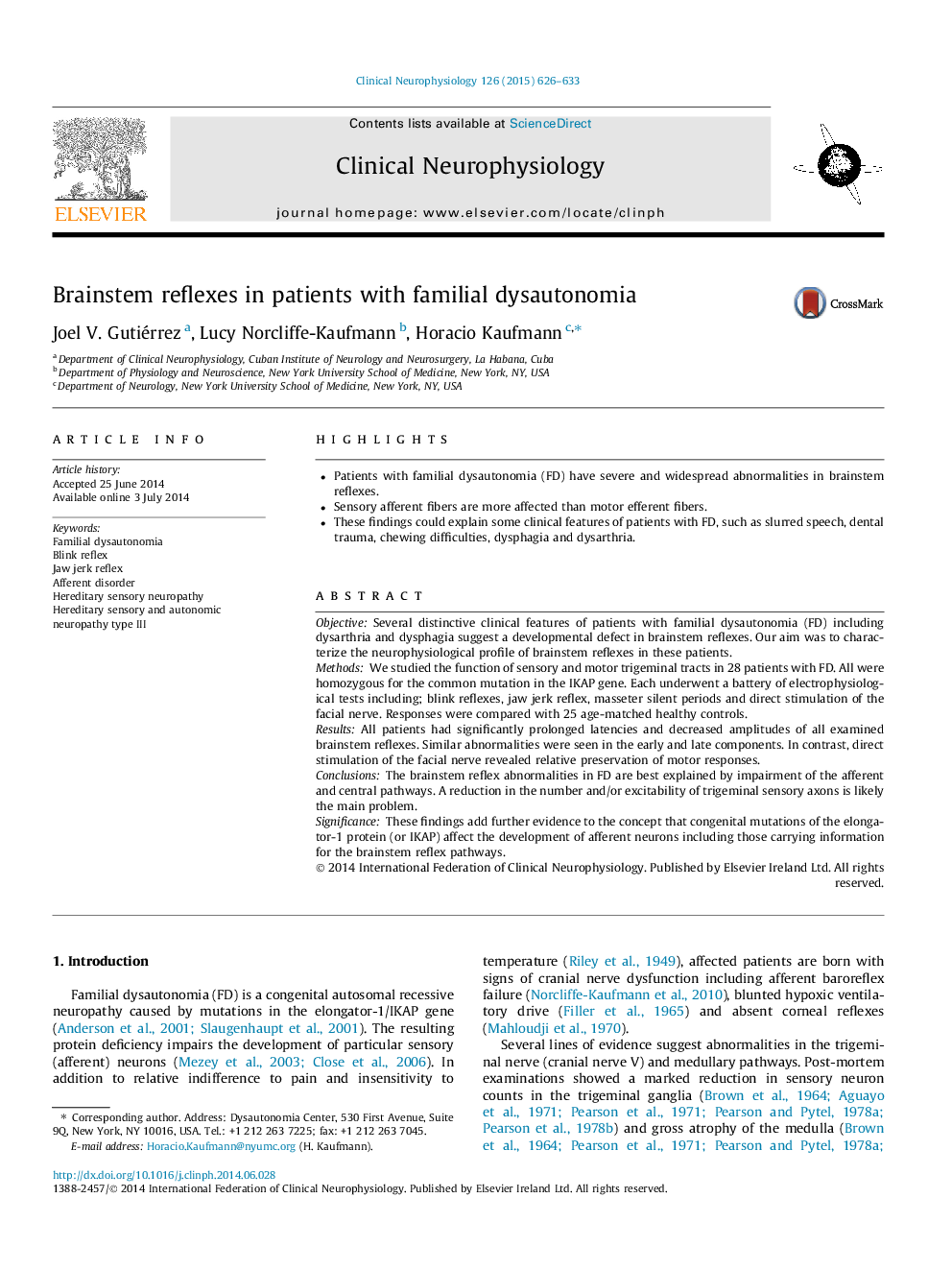| Article ID | Journal | Published Year | Pages | File Type |
|---|---|---|---|---|
| 3043723 | Clinical Neurophysiology | 2015 | 8 Pages |
•Patients with familial dysautonomia (FD) have severe and widespread abnormalities in brainstem reflexes.•Sensory afferent fibers are more affected than motor efferent fibers.•These findings could explain some clinical features of patients with FD, such as slurred speech, dental trauma, chewing difficulties, dysphagia and dysarthria.
ObjectiveSeveral distinctive clinical features of patients with familial dysautonomia (FD) including dysarthria and dysphagia suggest a developmental defect in brainstem reflexes. Our aim was to characterize the neurophysiological profile of brainstem reflexes in these patients.MethodsWe studied the function of sensory and motor trigeminal tracts in 28 patients with FD. All were homozygous for the common mutation in the IKAP gene. Each underwent a battery of electrophysiological tests including; blink reflexes, jaw jerk reflex, masseter silent periods and direct stimulation of the facial nerve. Responses were compared with 25 age-matched healthy controls.ResultsAll patients had significantly prolonged latencies and decreased amplitudes of all examined brainstem reflexes. Similar abnormalities were seen in the early and late components. In contrast, direct stimulation of the facial nerve revealed relative preservation of motor responses.ConclusionsThe brainstem reflex abnormalities in FD are best explained by impairment of the afferent and central pathways. A reduction in the number and/or excitability of trigeminal sensory axons is likely the main problem.SignificanceThese findings add further evidence to the concept that congenital mutations of the elongator-1 protein (or IKAP) affect the development of afferent neurons including those carrying information for the brainstem reflex pathways.
